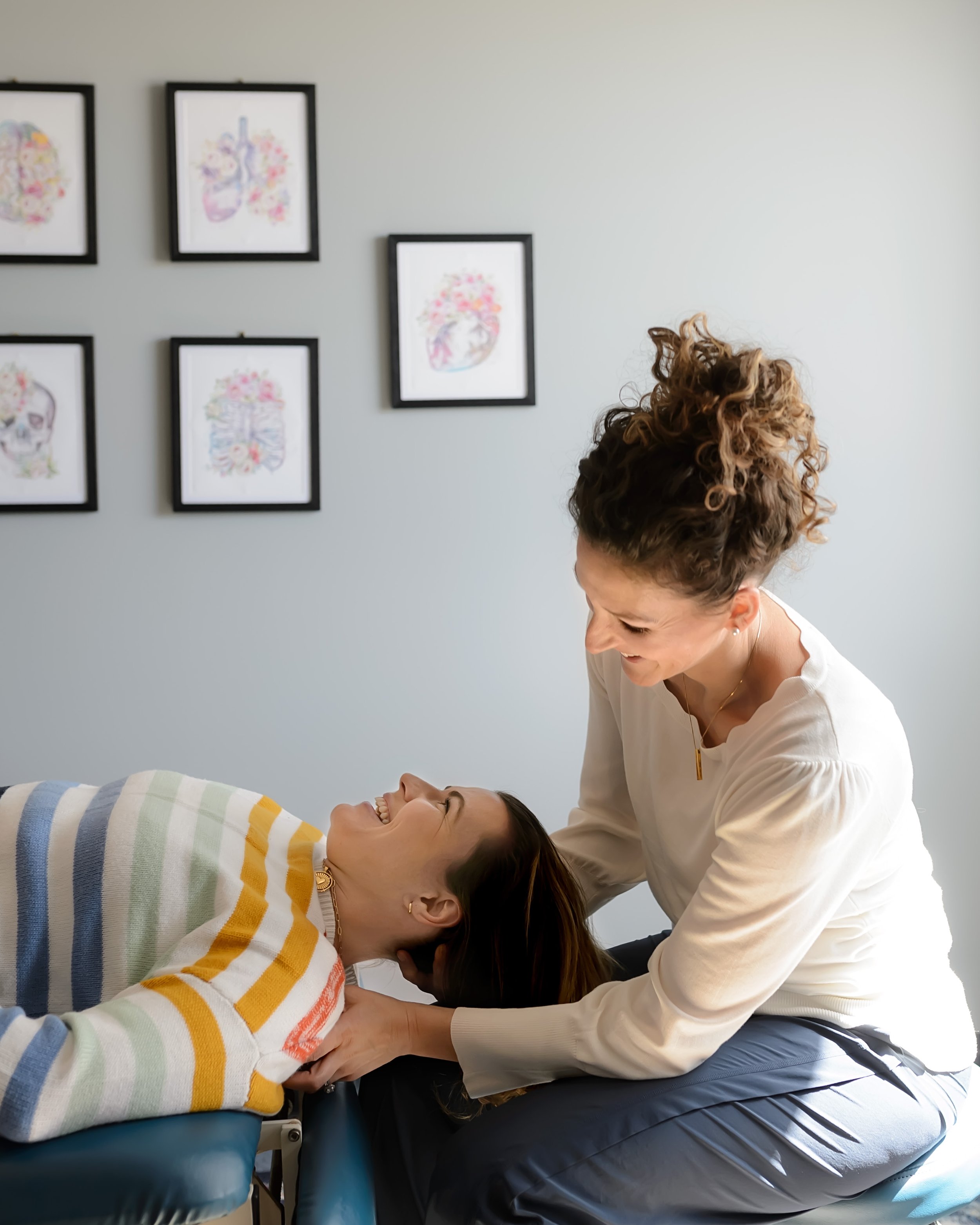
A consultative
approach
to a healthy lifestyle
-
What You Should Know
When you schedule with me, I want your experience to be different than what you’ve had at a doctor’s office before. We will talk for quite some time. Not only am I interested in your pain but I also want to know how you sleep and how’s your stress, as those factors greatly contribute to your pain and overall quality of life. Then we will get to assessment and treatment. It is important to me that you understand the biomechanics (movements) and lifestyle factors that are contributing to your ailment and thus can help correct the issue.
-
Why I Do This
I want to get to the cause of what’s going on and most importantly, I want to teach you how you can help fix this! I tell my patients all the time, it’s not healthcare if I am the only person that can fix you and the progress we are making doesn’t go beyond these walls. You must have tools to help aid in the healing process and I will teach you. This is incredibly empowering and also provides hope. I can’t always promise to fix every problem but I can promise that you will know more than when you left and have many resources for self-care.
-
The First Visit
Our first visit will be about 50 minutes. Come in comfortable clothes for treatment and also so I can see you move and teach you the exercises you will need to do at home or work. Any follow-up visits are usually half an hour, although some patients will schedule two back-to-back sessions for extra work. You are billed by the time spent with me, not the therapy provided. I’ve never been a fan of having to pick and choose therapies based on your pocketbook versus what was most necessary and beneficial. We will do a combination of hands-on therapies for what is most needed for your specific concern and where you are in the healing process with the time we have.
-

Sports Performance, Soft Tissue & Prevention
The goal of the services provided are based on two things: mobility and stability. If you need motion in a joint, you will be provided motion through treatment as well as home exercises. If you have too much motion in a joint, then you need stability which will be facilitated through treatment as well as through home exercises. In most cases, each person needs a combination of both and will receive care specific to their needs. Those needs cannot be determined until an evaluation of functional movements and a hands-on assessment is performed.
Treatments:
Chiropractic Adjustments
Dynamic Neuromuscular Stabilization (DNS)
Stability Exercises
Soft Tissue Mobilization/Release
Stretching
Nutrition Counseling
-

Treating Low Back Pain and Hip Pain
The majority of people in the United States will experience low back pain at some point in their life. The leading low back researcher in the world, Dr. Stuart McGill, has found that one of the main factors in low back pain is poor hip mobility. Generally speaking, if hip mobility is appropriate and sufficient there is less likelihood for low back pain. Desk jobs and long drives do not aid in preventing low back pain but actually add to it. There is more to it than just mobility. Strength and lifestyle factors must also be addressed to name a few.
Treating Root Causes of the Back Pain
First, Dr. Sporrer assesses each individual to see what the main factors are that are causing low back or hip pain. Then, we come up with an individual and attainable treatment plan that includes take home exercises. Typically there are quite a few factors that need to be addressed. These include but are not limited to:
Muscle Tension and Dysfunction
Stiff or Unstable Joints
Breathing Dysfunction
Core Weakness
Poor Mobility or Flexibility
Poor Pelvic Stability and Muscle Imbalances
Dietary Factors
-

Treating Neck Pain and Headaches
Some causes of neck pain involve two main body systems: joint and muscle. From Dr. Lauren’s experience, treatment using myofascial release has been extremely successful for her patients to ease pain and tension. Figuring out why that tension is happening is a more important question. Looking at jaw mechanics, postural and lifestyle factors are also important. When warranted and only with patient approval, joint manipulation can also be very effective. Visiting a chiropractor does not mean your neck or any other part of your spine has to be adjusted. Dr. Lauren believes in creating an environment where the patient feels comfortable and in control of their health care choices.
Correcting neck pain doesn’t stop there. Addressing any postural issues and associated muscle imbalances is important for total correction. Many times creating small cues to aid in general awareness, such as where to position the rearview mirror in our car, is a small step that can lead to a lifetime postural change that will decrease the chances of neck pain.
For headache and migraine sufferers, it can be a complicated and long road but there is hope! Dr. Lauren has had success in helping both types of patients learn how to manage symptoms and sometimes avoid them completely. Many factors come in to play that include lifestyle, dietary and water intake, food sensitivities, toxin exposure, muscular tension and imbalances and more. Together, she works with her patients to find the treatment course that is right for them.
-

Shoulder and Elbow Pain
-

Knee Pain
-

Ankle and Foot Pain
